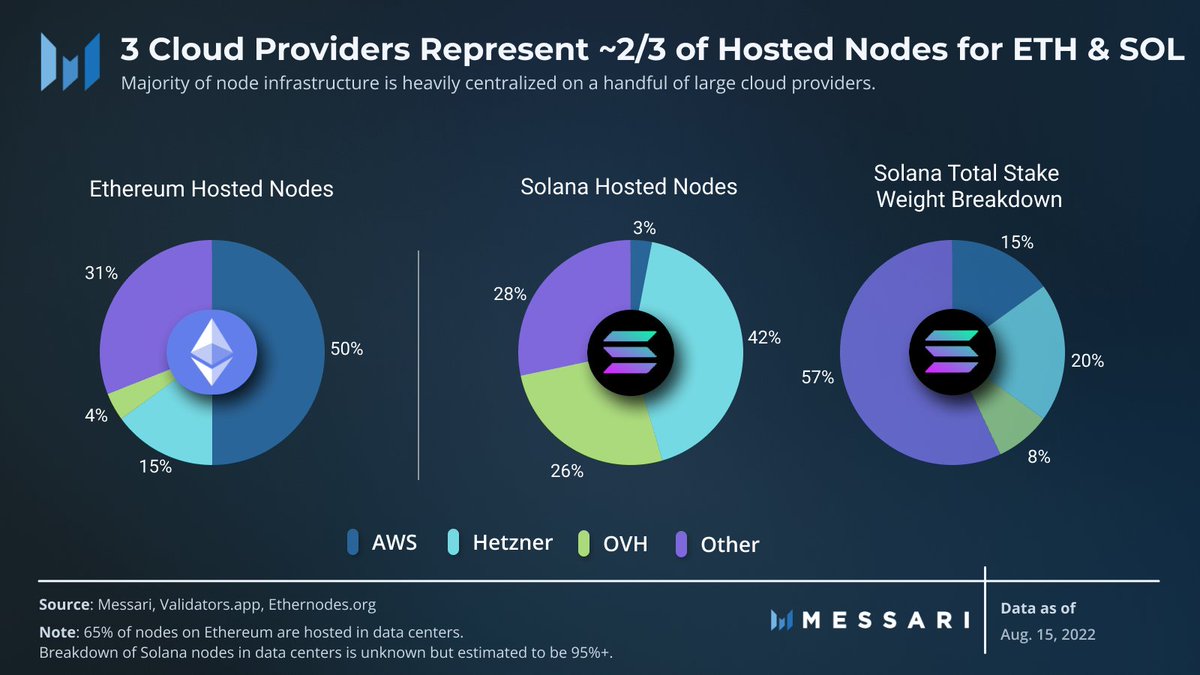
Decentralized cloud storage networks eliminate the need for third-party trust, remove single points of failure, and increase data security and privacy — all while being environmentally sustainable and cost-effective.
Are these networks the future of data storage? 🧵
Are these networks the future of data storage? 🧵

In a decentralized cloud storage model, data is distributed across a global P2P network of individually operated nodes, rather than on a single server located in a data center.
Data is typically split into shards, replicated, and distributed to various nodes.
Data is typically split into shards, replicated, and distributed to various nodes.

A big value prop. is that decentralized storage networks offer storage >70% cheaper than providers like Amazon S3
The networks decouple raw hard drive space from the services & support provided by centralized providers, turning cloud storage more into a commodity or utility
The networks decouple raw hard drive space from the services & support provided by centralized providers, turning cloud storage more into a commodity or utility

Here's a summary of the networks (see report for in depth analysis)
- Filecoin geared to cold storage for enterprises and devs. It's attractive for Web2 entities seeking cheaper alternatives for storing a lot of archival data
-Arweave is the go-to for permanent storage
- Filecoin geared to cold storage for enterprises and devs. It's attractive for Web2 entities seeking cheaper alternatives for storing a lot of archival data
-Arweave is the go-to for permanent storage

-Storj optimized for hot storage to enterprises, offers fast retrieval times and has proven effective for large video file sharing. Not fully decentralized tho
-Sia is used for hot storage mainly by devs. Good for users looking for fully decentralized and private storage solution
-Sia is used for hot storage mainly by devs. Good for users looking for fully decentralized and private storage solution
While the products and services built on top of decentralized storage protocols are still in their infancy, important elements such as access layers, content delivery networks, and enterprise-scale storage providers are beginning to appear in the market. 

Let's dive into data. Key metrics for decentralized storage protocols are used storage, total network capacity, network utilization, and revenue 

In 2022, the four storage networks accumulated over 17 million terabytes (TB) of total storage capacity, up 2% YoY, and 532,500 TB of used storage, up 1280% YoY. 



Revenue tracked is demand-side (revenue from real network usage). Revenue generated by Arweave, Storj, and Sia was roughly $1.4M, down 17% YoY.
Filecoin generated $13M in 2022, down 98% lol. I'm not going to get into this cause its complex, but its explained in the report
Filecoin generated $13M in 2022, down 98% lol. I'm not going to get into this cause its complex, but its explained in the report

Alright that's all im leaking for now. There's a bunch more info that you can find in the @MessariCrypto report.
Shoutout to @bloomberg_seth and @tech_metrics who I co-authored this with.
messari.io/article/the-es…
Shoutout to @bloomberg_seth and @tech_metrics who I co-authored this with.
messari.io/article/the-es…
• • •
Missing some Tweet in this thread? You can try to
force a refresh
















